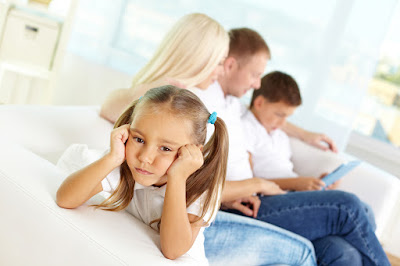Separation anxiety disorder
In Shakespeare’s above quote, Juliet declares her love for Romeo and cannot wait until tomorrow when they meet again. Children with a separation anxiety disorder are also unable and unwilling to go to bed for fear of getting away from their parents. However, the reasons for not wanting to get away from their parents are different in children than Juliet in the famous play.
What is a separation anxiety disorder and why does it happen?
First, it is important to understand that children experience a normal stage of separation anxiety. I always make it clear to friends and family that if their 9-24-month-old baby cries when the parent is absent or when a stranger comes to the room, this is a good thing. It is a good thing because crying is the result of anxiety when encountering something new that can happen between an infant and a mother. This is a milestone in evolution because cognitive development has reached the level where an infant knows the difference between familiar people and strangers. In addition, the infant learns what is familiar and what is not familiar in their environment.
When children start going to school for the first time, they may feel some anxiety about being separated because they adjust to staying outside the home for the first time.
Separation anxiety disorder becomes a serious problem when it interferes with the child’s ability to go to school or bed or in any new location or without the parent.
Symptoms of a separation anxiety disorder (Diagnostic and Statistical Manual IV:
- Frequent distress and anxiety when separating from home and parents.
- Always worry that something terrible will happen to parents when there is separation.
- He refused to go to school for fear of moving away from home and parents.
- Refusing to go to sleep for fear of losing parents or separating them.
- Parents follow up from one room to another for fear of separation and loneliness.
- Constant complaints about headaches, stomach pain, nausea and vomiting, etc. when anticipating separation.
In addition, these problems persist for at least four weeks and interfere with the child’s ability to work in a school in terms of learning and socialization.
Diagnostic problems:
A. Younger children do not talk about their fears and anxieties or express them verbally. Therefore, it is important for parents to be alert to the above types of symptoms. If there is any doubt, parents should ask for their child’s evaluation and diagnosis.
B. Separation anxiety disorder can be difficult to diagnose because there is interference with other anxiety disorders. For example, social phobia or a fear of being with other children can be confused with separation anxiety. Then, too, a stressful event can upset any child or adult. The problem is not a temporary worry. Instead, persistent anxiety and/or weeks or months indicates a problem.
C. There are many reasons why a child refuses to go to a school that has nothing to do with separation anxiety. For example, a school bully that threatens a child will definitely discourage a young person from wanting to go.
Why does separation anxiety disorder occur?
It is not clear what caused separation anxiety disorder. Research shows that anxiety disorders are present in families with a genetic component. In addition, children and adolescents with separation anxiety disorder often continue to develop other types of anxiety disorders during adulthood. In addition, a separation anxiety disorder can affect some adults, not just young adults.
John Polly was the psychiatrist who did a lot of work in the reservation field. According to attachment theory, anxiety disorders are closely related to parenting experiences in children with their mothers. These children who learn that their mother is reliable from safe attachments, and these children who learn that their mother is unreliable are developing anxiety attachments.
Whether you agree with Bowlby or no evidence to help young people with separation anxiety disorder, it lies in this theory.
Treatment for a separation anxiety disorder:
It is important not to ignore children and adolescents if they suffer from this disorder because of the way it interferes with their lives and the possible development of other anxiety disorders.
1. Cognitive and behavioral treatments are important in treating separation anxiety disorder.
A. Cognitive therapy helps children to correct and correct frightening and unrealistic ideas about separation from the family.
B. Behavior therapy is used to remove allergies and it is the child or teenager who is separated from home.
Our Services
Psychologist North Brisbane, Psychologist North Lakes, Psychologist Redcliffe, Anxiety help Brisbane, Autism testing Brisbane, Anxiety counseling Brisbane, Child psychologist North Lakes, Psychologist Kallangur, Child psychologist Redcliffe, Autism diagnosis Brisbane, Child psychologist North Brisbane, ADHD diagnosis Brisbane, ADHD Brisbane, Anxiety treatments Brisbane, Child psychologist Brisbane, NDIS psychologists, NDIS therapy
Tags
Behavioural psychologist, Bipolar treatment, NDIS psychologist, Ndis provider north lakes, Ndis psychosocial psychologist, Separation anxiety psychologist, Social anxiety psychologist, Panic attack treatment, Stress therapy, Depression psychologist, Anxiety psychologist, Developmental delay psychologist, Autism psychologist, Aspergers psychologist, Iq testing psychologist, Learning difficulties assessments, Medicare psychologist, Adhd therapy Brisbane, Best psychologist near me, ASD Diagnosis, ASD assessment, Autism spectrum disorder psychologist
Areas services
Brisbane, North lakes, Redcliffe, Kallangur, Narangba, Murrumbadowns, Brisbane Northside, Rothwell, Kippa-Ring, Sandgate, Bribe Ísland, Caboolture
